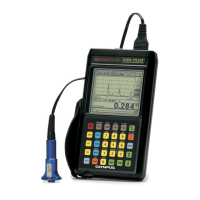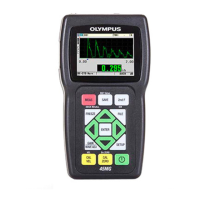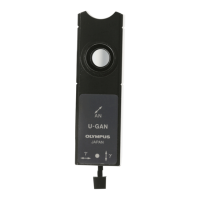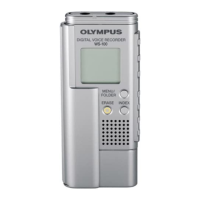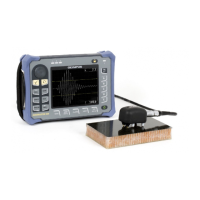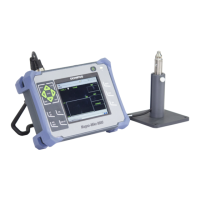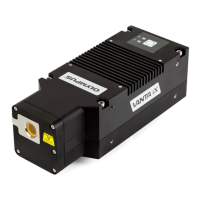DMTA-10004-01EN, Rev. D, November 2016
Custom Setups for Single Element Transducers
231
The max gain can never be lower then the initial gain and has a maximum value of
99.0 dB.
13.6.2 Initial Gain
The initial gain sets an upper limit on receiver gain in the vicinity of the excitation
pulse (mode 1) or of the interface echo (modes 2 and 3). By effectively making the
excitation pulse or interface echo smaller, the TDG curve allows detection of echoes
occurring close to the pulse. You can adjust the initial gain from 0 dB to the maximum
defined by the MAX GAIN setting.
The INIT GAIN setting is most critical in applications where minimum thickness
measurements must be optimized. It should always be set with the aid of a reference
standard representing that minimum. In cases where the minimum thickness
capability is less important than penetration and scatter echoes are not a problem, you
can set the initial gain equal to the maximum gain.
The initial gain does the following:
• Indicates the initial (time-dependent) receiver gain currently selected
• Amplifies echoes that are close to the Main Bang or interface echoes
• Starts at time zero and extends to:
— the main bang blank in mode 1
— the end of the interface blank in modes 2 and 3
13.6.3 TDG Slope
The TDG slope controls the rate at which the receiver gain slopes up from the initial
gain level to the maximum gain level. The TDG slope starts at the position of the MB
BLANK parameter in mode 1 and at the end of the IF BLANK parameter in mode 2
and mode 3. The TDG slope helps suppress reflections from grain structure or fibers.
Generally, you should set the TDG slope as high as possible to reach the maximum
gain as quickly as possible without having the gage hang up on spurious signals. You
can set the slope from 0.0 dB/µs to 39.95 dB/µs.

